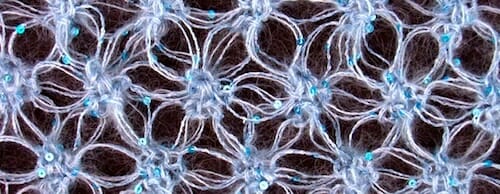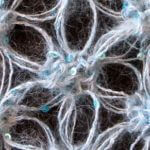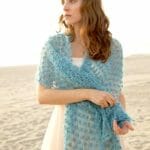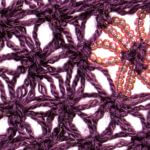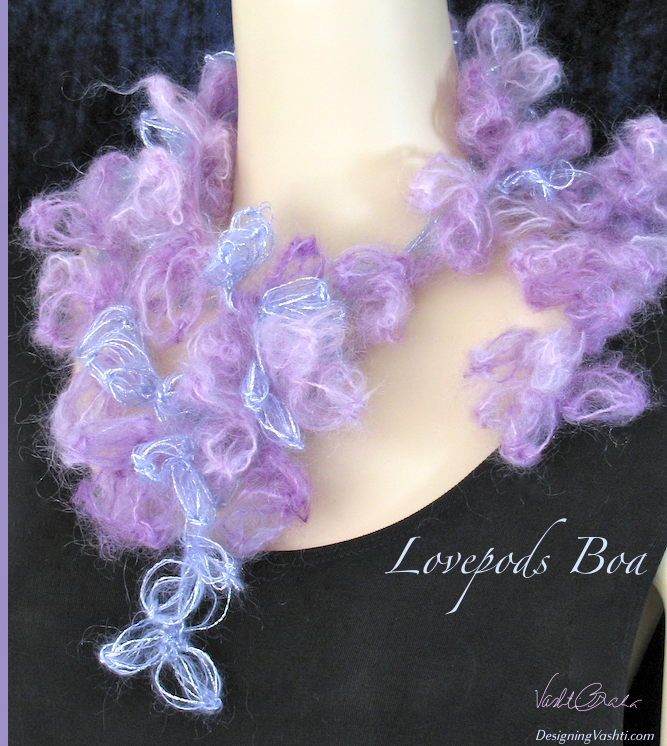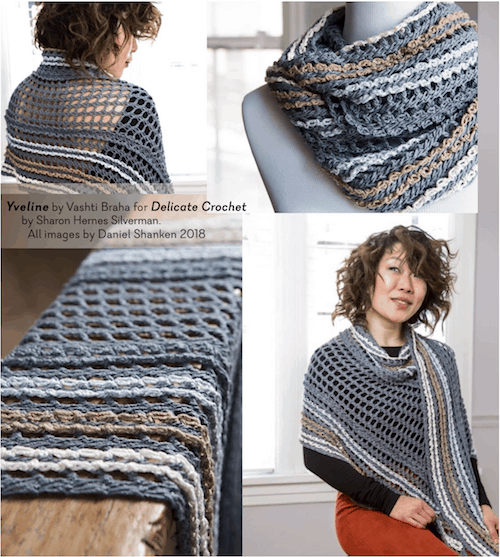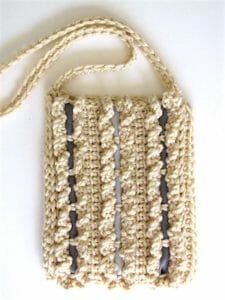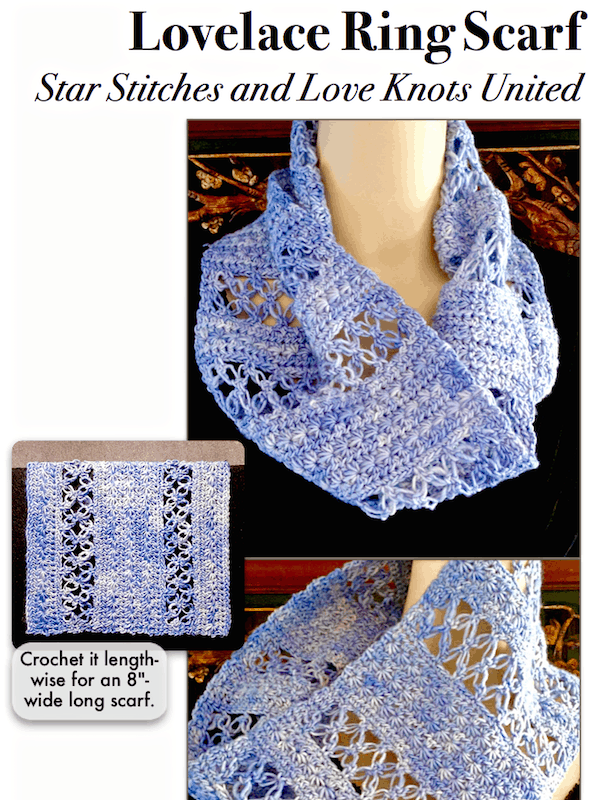
Two romantic 19th-century crochet stitches from contrasting traditions have gracefully joined forces to warm up 21st-century necks!
I’ve used four basic crochet stitches, from slip stitch to double crochet, to smooth the way for these two unique stitches to work well together. You’ll pick up crocheting speed and never get bored.
As the laciest of the lacy stitches, love knots (aka lovers knot, Solomon’s knot) are ideal for balmy climates. Victorian-era crocheters used the finest cotton and silk threads to make fancy love knot edgings, opera bags, and baby bonnets.
Star stitches are a classic northern European stitch for crocheting thick warm coats and baby blankets in wool yarns. Even the delicate lacy stars of the earliest patterns were crocheted in lace weight wools, not cotton thread.
Pattern includes stitch hows & whys, and scarf customizing tips. The story of this special stitch pattern is blogged here.
Skill Level
Intermediate. Both star stitches and love knots are iconic Intermediate skill level stitches. In fact, the love knot has at times served to distinguish the crochet skill levels.
I teach separate three-hour classes on each of these stitch types. For this pattern I’ve selected the less challenging versions of them, and include some tips, hows, and whys that have helped my students.
You’ll have the opportunity to learn these skills:
- How to crochet a classic two-row star stitch.
- How to insert a two-row band of simple love knot mesh that has a selvage, and why.
- How to customize this new stitch pattern so that you can use it for many other projects.
Finished Dimensions
One-skein scarf is 7.5″ {19 cm} wide and 30″ {76.2 cm} long (circumference of ring). Width is determined by the number of foundation chains. Add a second skein to lengthen.
Materials
- Crochet Hook Size G/7 {4.50 mm} or size needed for gauge.
- Yarn used: Madelinetosh Tosh DK (100% merino wool, 225 yds/206 m per 3.5 oz/100 g), one ball of color Blue Gingham used.
Yarn substitution advice: I recommend that you use wool yarn, or a wool-like blend. A single ply type like I’ve used here shows off these stitch textures especially well. Choose a #3 Light Weight yarn with a recommended crochet hook size range of US G/7 {4.50 mm} to US I/9 {5.5 mm}. These yarns may also be called Light Worsted.
- Notions: Scissors. Yarn needle. Large button(s), optional.
